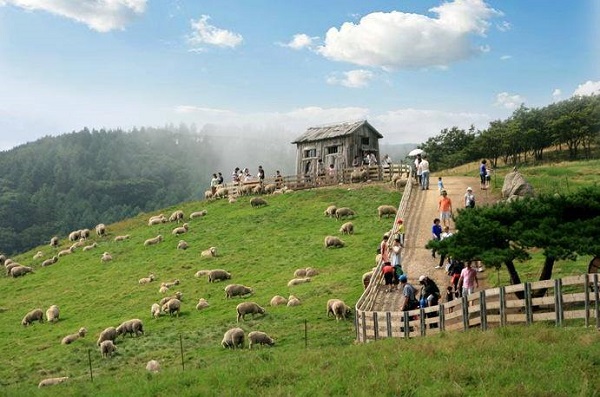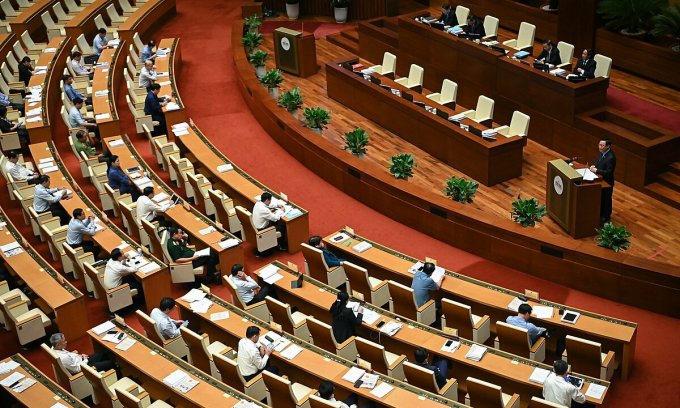What are the regulations of Vietnamese law on building livestock farms?

Currently, many people have a need to build poultry and cattle farms and have questions about whether to build a livestock farm, they must apply for a livestock license or not, and the size of the farm will be as follows: how? To solve these problems, today, LSX Lawfirm will give you an article about “What are the regulations of Vietnamese law on building livestock farms?“, as follows:
Legal grounds
- Construction Law Amendment in 2020
- Decree 13/2020/ND-CP
- Law on Livestock 2018
Current regulations on building livestock farms
Pursuant Article 89 of the Law on Construction 2014 stipulates the subjects and types of construction permits, specifically as follows:
- Before starting work construction, the investor must obtain a construction permit issued by a competent state agency in accordance with this Law, except for the case specified in Clause 2 of this Article.
- Works exempt from construction permits include:
a) Works that are state secret, works built under urgent orders, and works located in the area of two or more provincial-level administrative units;
b) Works under construction investment projects decided on investment by the Prime Minister, Ministers, Heads of ministerial-level agencies, Presidents of People’s Committees at all levels;
c) Temporary construction works serving the construction of main works; What are the regulations of Vietnamese law on building livestock farms?
d) Works built along lines outside urban areas but in accordance with construction plans already approved by competent state agencies or approved by competent state agencies in terms of work alignments.
đ) Construction works under projects of industrial parks, export processing zones, and high-tech parks with detailed planning 1/500 approved by competent state agencies and appraised for construction designs according to construction design regulations. provisions of this Law;
e) Houses under urban development projects, housing development projects with a scale of fewer than 7 floors and a total floor area of fewer than 500 m2 with a detailed 1/500 plan approved by a competent state agency. ;
In addition
g) Works to repair, renovate or install equipment inside the work without changing the load-bearing structure, without changing the use functions, without affecting the environment and safety of the works;
h) Repair or renovation works that change the exterior architecture not adjacent to roads in urban areas with requirements on architectural management;
i) Technical infrastructure works in rural areas only require the preparation of economic-technical reports on construction investment and in areas where there is no approved detailed construction planning for rural residential quarters;
k) Construction works in rural areas in areas where there is no approved urban development planning and detailed construction planning; separate houses in rural areas, except for separate houses built in conservation zones, historical-cultural relics;
l) The investor in the construction of works exempted from construction permits as prescribed at Points b, d, dd, and I of this Clause is responsible for notifying the time of construction commencement enclosed with the construction design dossier to the local construction management agency for monitoring and record keeping.
Thus, based on the content of Article 80 of the Law, if you want to build a livestock farm but do not fall into any of the cases specified in Clause 2, Article 89 of the Law on Construction 2014, you will be required to apply for a construction permit build.
What are the regulations on the size of the farm?
Pursuant to the provisions of Clause 9 Article 2 of the Law on Livestock 2018: Farming is a form of organizing livestock production activities in a separate area for livestock production and business.
Farm animal husbandry includes large-scale, medium-scale, and small-scale farming.
Article 21 of Decree 13/2020/ND-CP details the scale of livestock production.
The principles for determining the scale of livestock production are prescribed as follows
- Firstly, The scale of livestock and poultry raising is determined by the number of livestock units at the livestock establishment at the same time;
- Secondly, The scale of raising other types of livestock is determined by the number of livestock at the breeding establishment at the same time;
- Thirdly, In the case of a mixed-breeding establishment consisting of cattle, poultry, and other livestock, the livestock production scale includes the total number of livestock units of cattle and poultry and the quantity of each other types of livestock.
The scale of livestock and poultry production is regulated as follows
- Large-scale farming: From 300 livestock units or more;
- Breeding on medium-sized farms: From 30 to less than 300 livestock units;
- Small-scale farming: From 10 to less than 30 livestock units;
The livestock unit coefficient is specified as follows
– The coefficient of livestock units used as a basis for converting the number of livestock into livestock units;
– The livestock unit coefficient, the formula for converting the number of livestock to livestock units is specified in Appendix V of Decree 13/2020/ND-CP.
For livestock farms in general
For livestock farms in general
Farm animal husbandry must satisfy the conditions specified in Clause 1, Article 55 of the Law on Livestock 2018, specifically as follows:
- The location of the farm is suitable to the socio-economic development strategy of the locality, region, and livestock development strategy; meet the requirements on livestock density as prescribed;
- Having enough water source to ensure quality for livestock production and treatment of livestock waste;
- Take measures to protect the environment in accordance with the law on environmental protection;
- Having stables and breeding equipment suitable for each type of animal;
- Having records to record the process of livestock production, use of animal feed, veterinary drugs, vaccines and other information to ensure traceability; keep records for a minimum period of 01 year after the end of the breeding cycle;
– There is a safe distance from the farming area to the subjects affected by livestock activities and from the source of pollution to the area where the livestock raised.
Regulations on safe distance for livestock farms
- The minimum distance from a small-scale livestock farm to a concentrated area for treatment of domestic, industrial and residential waste is at least 100 meters; Schools, hospitals, markets are at least 150 meters away.
- The minimum distance from a medium-sized livestock farm to a concentrated area for treatment of domestic, industrial and residential waste is at least 200 meters; Schools, hospitals, markets are at least 300 meters away.
- The distance from the large-scale livestock farm to the concentrated waste treatment area of domestic, industrial and residential areas is at least 400 meters; School, hospital, market, domestic water supply for residential community is at least 500 meters.
- The distance between 02 livestock farms of 02 different subjects is at least 50 meters.
For large-scale livestock farms
- Organizations and individuals raising large-scale farms must granted a Certificate of eligibility for livestock production. Regulations on issuance of Certificate of eligibility for livestock production for large-scale farm animal husbandry are in Article 23 of Decree 13/2020/ND-CP.
Issuing authority
What are the regulations of Vietnamese law on building livestock farms?
– The Department of Agriculture and Rural Development shall issue the Certificate of eligibility for livestock production for large-scale farm animals in the locality;
– In case the large-scale livestock production establishment is located in two or more provinces, the Department of Agriculture and Rural Development where the organization or individual has registered for investment procedures shall issue a Certificate of eligibility. livestock conditions for large-scale farming.
The order and procedures for issuing the Certificate are as follows
- Organizations and individuals send dossiers to competent agencies, dossiers include:
- An application form for the Certificate of eligibility for livestock production for large-scale farm animals (made according to Form No. 01.DKCN Appendix I);
- An explanation of the breeding conditions (according to Form No. 02.DKCN Appendix I).
– Within 05 working days from the day on which the complete and valid application received, the competent authority shall re-issue the Certificate of eligibility for livestock production for large-scale farm animals; In case of refusal, it must reply in writing and clearly state the reason.
Consulting service of LSX Lawfirm
Above is LSX Lawfirm’s advice on the content of the problem “What are the regulations of Vietnamese law on building livestock farms?”. And all the above knowledge to use in work and life. If you have any questions and need more advice and help, please contact the hotline for the reception. Lawyer X is a place that provides reputable and fast business services at reasonable prices. Customers will be extremely satisfied when using our services.
- FB: www.facebook.com/luatsux
- Tiktok: https://www.tiktok.com/@luatsux
- Youtube: https://www.youtube.com/Luatsux
Contact LSX Lawfirm
Finally, hope this article is useful for you; answer the question: “What are the regulations of Vietnamese law on building livestock farms?”. If you need more information, please contact LSX Law firm: at +84846175333 or Email: [email protected].
Related article
- Regulations on building livestock farms in Vietnam
- How to convert farmland in Vietnam to residential land?
- Enterprises send Vietnamese workers to practice abroad
Related questions
Farming is a form of organizing livestock production activities in a separate area for livestock production and business (as prescribed in Clause 9 Article 2 of the Law on Livestock 2018). Farm animal husbandry includes large-scale, medium-scale and small-scale farming.
a) The scale of livestock and poultry raising is determined by the number of livestock units at the livestock establishment at the same time;
b) The scale of raising other types of livestock is determined by the number of livestock at the breeding establishment at the same time;
c) In the case of a mixed-breeding establishment consisting of cattle, poultry and other livestock, the scale of production shall include the total number of livestock units of cattle and poultry and the quantity of each other type of livestock.
a) Firstly, Large-scale livestock production: From 300 livestock units or more;
b) Secondly, Medium-scale farming: From 30 to under 300 livestock units;
c) Thirdly, Small-scale livestock production: From 10 to under 30 livestock units;
d) Finally, Farming households: Less than 10 livestock units.
Conclusion: So the above is What are the regulations of Vietnamese law on building livestock farms?. Hopefully with this article can help you in life, please always follow and read our good articles on the website: lsxlawfirm.com




